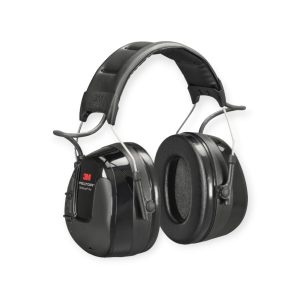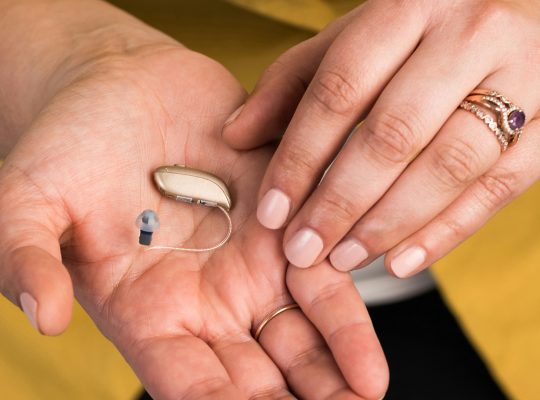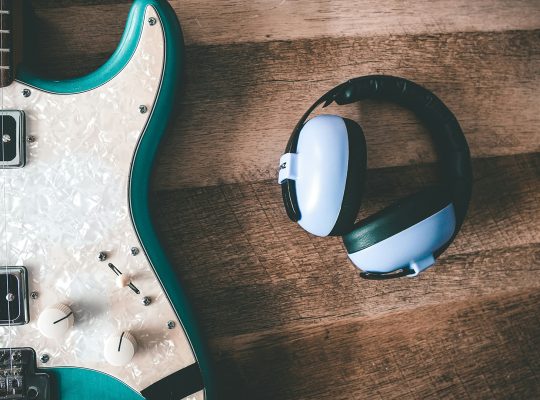Gardening is known as a soothing activity, but that doesn’t mean it’s always quiet. Think lawnmowers, leaf blowers, hedge trimmers or other power tools: they all produce quite a few decibels. And prolonged exposure to loud noises can cause permanent hearing damage. So hearing protection while gardening is not an unnecessary luxury, especially if you regularly work with noisy equipment. Earmuffs are in that case a practical and comfortable solution.
What are ear muffs and how do they work?
Earmuffs are hearing protectors that you wear over your ears. They consist of two cushioning shells connected by a headband. The inside of the shells contain sound-absorbing material that significantly reduces ambient noise. Unlike earplugs, you don’t have to put anything in your ear, which feels more comfortable for many people, especially during prolonged use such as gardening.
The benefits of ear muffs in the garden
1. Effective noise reduction
Earmuffs can reduce noise levels by 20 to 30 decibels, depending on the model. This makes them ideal for using lawn mowers, chainsaws or pressure washers.
2. Comfort during prolonged use
Modern earmuffs are designed with comfort in mind. With soft cushions and adjustable headbands, you can wear them for hours without discomfort to your ears or head.
3. No irritation in the ear canal
For people who are sensitive to earplugs or are easily bothered by their ear canals, ear muffs are a pleasant alternative. They seal off the ear from the outside without direct contact with the inner ear.
4. Reusable and sustainable
Earmuffs last a long time, especially if you maintain them properly. Thus, they are a lasting investment in your hearing.
Which ear muffs are suitable for gardening?
Not all ear muffs are the same. When choosing hearing protection for the garden, it is important to pay attention to a few things:
- Damping power (SNR value): Choose ear muffs with good noise reduction (preferably 25 dB or more) if you work with noisy equipment.
- Comfort: Go for a model with soft ear cushions and an adjustable headband.
- Weather resistance: If you work in wind and weather, water- and sweat-resistant earmuffs are recommended.
- Additional features: Some models have integrated radio or Bluetooth, so you can listen to music or a podcast while working.
Known situations where earmuffs in the garden are helpful
Leaf blowing or lawn mowing
These are perhaps the loudest jobs in the garden. Ear muffs here offer immediate protection against hearing damage, especially if you’re working for long periods of time.
Trimming hedge with electric hedge trimmer
Although less loud than a leaf blower, an electric hedge trimmer still produces quite a bit of noise. Earmuffs keep the noise at an acceptable level.
Cutting wood or tinkering with a gazebo
With power tools such as circular saws or sanders, you quickly find yourself above 85 decibels, the point at which hearing protection is recommended.
Working with high-pressure sprayer
In addition to a lot of splashing, it produces an unpleasant, high-frequency sound. Earmuffs ensure that your hearing does not suffer.
Gardening with children: protect young ears
Ear muffs can also be useful for children who help out in the garden. Their hearing is especially susceptible to damage, and noisy garden chores can pose unintended risks. There are special earmuffs for children that are lighter and smaller, but just as effective.
Combining with other protective equipment
In the garden, sometimes you work not only with noise, but also with dust, dirt or sunlight. Earmuffs combine well with:
- Safety glasses for protection from flying debris or branches.
- Sun hats or caps in sunny weather. Be sure to choose ear muffs that fit well with head protection.
- Gloves for grip and safety.
Be careful that your protective equipment does not interfere with each other: the ear muffs must remain tightly sealed.
How do you maintain ear muffs?
Earmuffs last a long time if you take good care of them:
- Clean them regularly with a damp cloth, especially if you work in hot conditions.
- Check the ear pads for wear. Are they dried out or cracked? If so, replace them promptly.
- Store them in a dry place, out of the sun. Extreme heat or cold can affect the material.
- Use a storage box when not in use to keep out dust and dirt.
Frequently asked questions about gardening with ear muffs
Can you listen to music with ear muffs on? Yes, there are ear muffs with built-in speakers and Bluetooth that allow you to safely listen to music while wearing ear protection.
Aren’t ear muffs too hot in the summer? Modern models are made of breathable materials. Choose a lightweight one with ventilation for hot days.
Can I wear ear muffs with glasses or sunglasses? Yes, although it is important that the glasses feathers do not seep under the earmuff seal. Some ear muffs are designed specifically for eyeglass wearers.
Are earmuffs better than earplugs for gardening? It depends on your preference. Earmuffs often offer slightly more attenuation at low frequencies and are easier to turn on and off. Earplugs are more compact, but less comfortable with prolonged use.
So: protect your hearing while gardening
Gardening is healthy and relaxing, but it sometimes involves noise. Earmuffs are a simple way to protect your hearing while working with noisy equipment. They provide comfort, are durable and effectively protect against hearing damage. Whether you’re trimming your hedge, cutting the grass or tinkering in the garden with your children, good hearing protection is part of the job. Take your ears seriously so that you can continue to enjoy the sound of birds singing and leaves rustling for years to come. Because that’s what you want to keep listening to.
Want to know which ear muffs are best suited for your yard work? Then check out our selection and choose the hearing protection that fits your situation.














